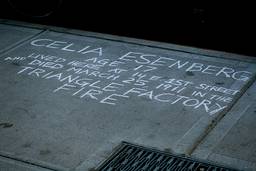
Journalists and economic commentators have been deeply concerned with predicting when the recession will end. Cable TV has spent hours reading economic tea leaves, searching for signs of recovery.
Yesterday, NPR ran a story about NFL Football and the economy. The NFL has a rule that if tickets are still available 72 hours before kickoff, then local TV cannot broadcast the game.
(Last year, this happened nine times. This year, the number is expected to be more than twelve. The larger the number of TV blackouts, apparently, the less confidence people have in the economy — as indicated by lower ticket sales.)
It’s obvious why we obsess over the economy: we are worried and hope the worst might be over. NPR has been running a recurring feature asking people to call in with their personal econometric indicator, often offering cute attempts at humor.
Well, here’s my economic indicator: the day laborers at 69th Street in Jackson Heights, Queens.
Jackson Heights is one of the most diverse communities in the United States, with over twenty spoken languages, dozens of ethnicities and real mix of working and middle classes. To my mind, it’s one of the best places to experience real cosmopolitanism in the country.
Its working-class residents, however, have been hit hard by the recession. 69th Street, a minor commercial street for the community, is a barometer for the economy.
The street has functioned as a kind of open-air hiring center for day laborers during the least five years, sort of the way Home Depot parking lots work in the suburbs. I travel down this street regularly, and have watched the ebb and flow of our economy.
I have witnessed groups of workers hanging around street corners waiting for work, exactly the same way garment workers would gather on street corners in the Lower East Side a hundred years ago. I have spoken to many workers, mostly young men from El Salvador or Mexico, about their work and lives.
They stand in small groups, waiting for vans or cars to pull up and hire them. In boom times, many worked seven days a week, often ten hours a day. Today, they are lucky if they work two full days per week.
Standing in the street, talking to drivers through open windows, they negotiate their wages for the day. In the past few years, most of the workers were gone by early morning, hired by contractors for jobs in construction during the housing boom in NYC.
In the past few months, I noticed that there are large numbers of workers still searching for work well after noon. On a recent afternoon, around 2 p.m., I counted more than 200 workers in a ten-block area.
There is an air of desperation on the street. As the day drags on and cars stop pulling over, a sense of dread falls over them. These men, in their early 20s, have dependents here and in their home countries who are supported by their wages.
Not working for a few days often means little money back home and little to eat here.
NPR might find some light-heartedness in their discussion of signs of economic recovery, but from 69th Street, things look bleak and there is no indication that things might improve.
Now, I know this might not be the leading economic indicator Wall Street is looking for. But wouldn’t it be something if it was?








